" Through a black night of cloud and rain/The Black Ship plies her way/
An alien thing of evil mien/Across the waters gray " - Japanese Folk Song
Prior Efforts
Though various nations attempted to pry Japan open through the 1800's, none put in as much effort as the US. Japan's coal supplies and greater connections to Asia symbolized a wealth of possibilities for the rising Pacific power.
"The Portuguese, Spaniards, Dutch, English, French, and Russians have, each in turn, sought to establish commercial relations with Japan. The Portuguese and English have both so far succeeded, that, but for themselves, they might permanently have retained their positions." - Matthew Perry and Francis L. Hawks [1856]
Unfortunately for the US, first attempts to break through were in vain.
"…Commodore James Biddle entered Edo Bay and engaged in preliminary contact with Japanese officials. Biddle was not allowed to come ashore, however, and when ordered to 'depart immediately' did precisely as he had been told — leaving no legacy beyond a few American and Japanese illustrations of his warships" - John W. Dower, Professor of History MIT [2010]
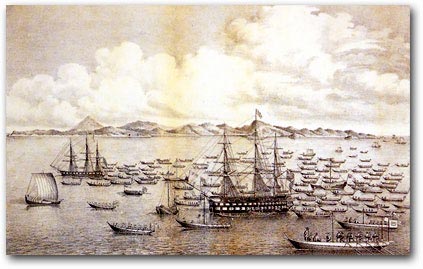
Commodore James Biddle's ships in Edo Bay
Unknown Artist [1846]
Peabody Essex Museum
Commodore Matthew Perry
Coming from a long line of naval officers, Matthew Perry had already proven himself as a naval leader in the Mexican-American War. When "…President Millard Fillmore authorized a formal naval expedition to Japan…"(United States Office of the Historian) in 1851 with the goal of "return[ing] shipwrecked Japanese sailors and request that Americans stranded in Japan be returned to the United States" and opening Japan's borders, he chose none other than Commodore Matthew Perry.
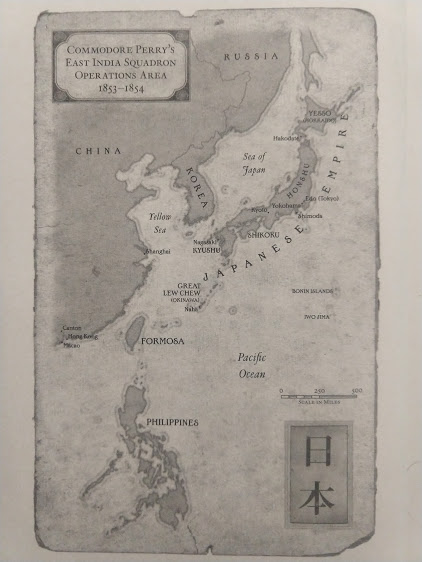
Matthew Perry's Operations Map
George Feifer
Breaking Open Japan [2006]
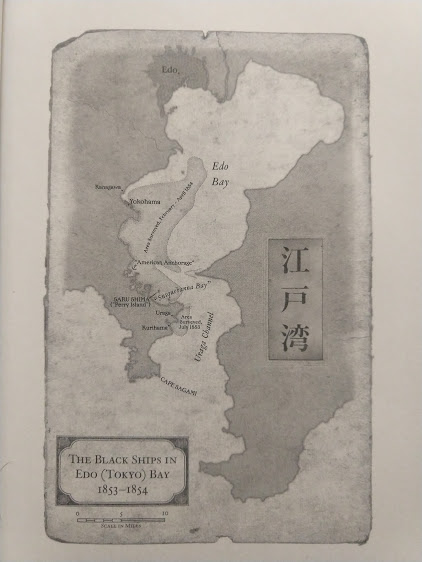
Map of Edo Bay
George Feifer
Breaking Open Japan [2006]
"People in the fishing village of Shimoda were the first to spot four huge hulks, two streaming smoke, on the ocean's surface approaching shore. 'Giant dragons puffing smoke,' cried some. 'Alien ships of fire,' cried others…Barbarians from out of the blue! Will they invade, kidnap, kill, then destroy everything? What will happen to the Land of the Rising Sun?" - Blumberg [1985]
"The subordinate American officers had been…amused with the rude efforts [sic.] of Japanese artists who had been sent from Yedo, at delineating their portraits" - Matthew Perry and Francis L. Hawks [1856]
"Perry possessed what his predecessors had lacked: grim determination, for one thing—and, still more intimidating, the steam-driven warships. He was not to be denied" - Dower [2010]
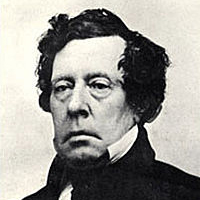
Matthew Perry
Mathew Brady [1856]
Library of Congress Miscellaneous Items in High Demand
Commodore Perry arrived in Edo Bay on July 8, 1853, with "…a letter from President Millard Fillmore to the Emperor of Japan, proposing 'that the United States and Japan should live in friendship and have commerical intercourse with each other.' The letter requested that ports be opened so that American ships could obtain coal and provisions" (Blumberg). The US was unaware that the actual power of Japan lay in the hands of the Shogun in Edo's Palace, and that the "…Emperor was a powerless figurehead who lived in Kyoto…" (Blumberg).
Japanese citizens' initial reaction was fear. This quickly gave way to curiosity of the "strange white men".
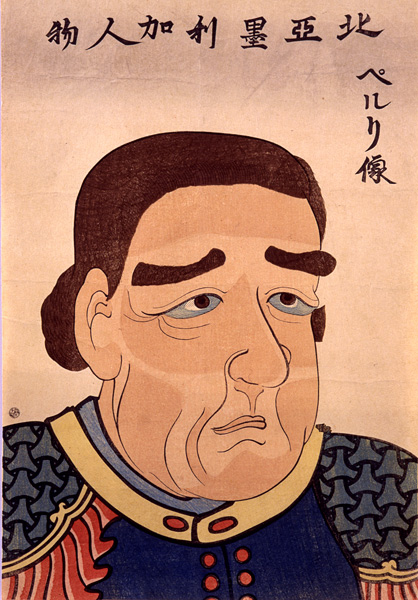
Japanese Portrait of Perry
Unknown artist [1854]
Nagasaki Prefectural Art Museum
Anchoring near the capital, Edo, Perry's four ships carried myriad firearms. His gunboat diplomacy signaled that Japan risked war if ports remained closed. Perry allowed no more than three shogunate officials on board at a time and refused their requests so as to not show weakness.
"The Commodore also stated that it was his intention to return to Japan in the approaching spring…Then the question was asked 'whether the Commodore would return with all four vessels?' 'All of them,' answered the Commodore, 'and probably more, as these are only a portion of the squadron'" - Matthew Perry and Francis L. Hawks [1856]
Perry's strategy and unruly determination forced Japan to accept President Fillmore's letter. Perry left with a warning that he would return with a large fleet.
________________________________________________________________________________________________________________________________________________________________
The US was the most determined of all nations to open Japan's ports. Commodore Perry achieved the impossible by getting Japan to accept a foreign letter through gunboat diplomacy.
________________________________________________________________________________________________________________________________________________________________